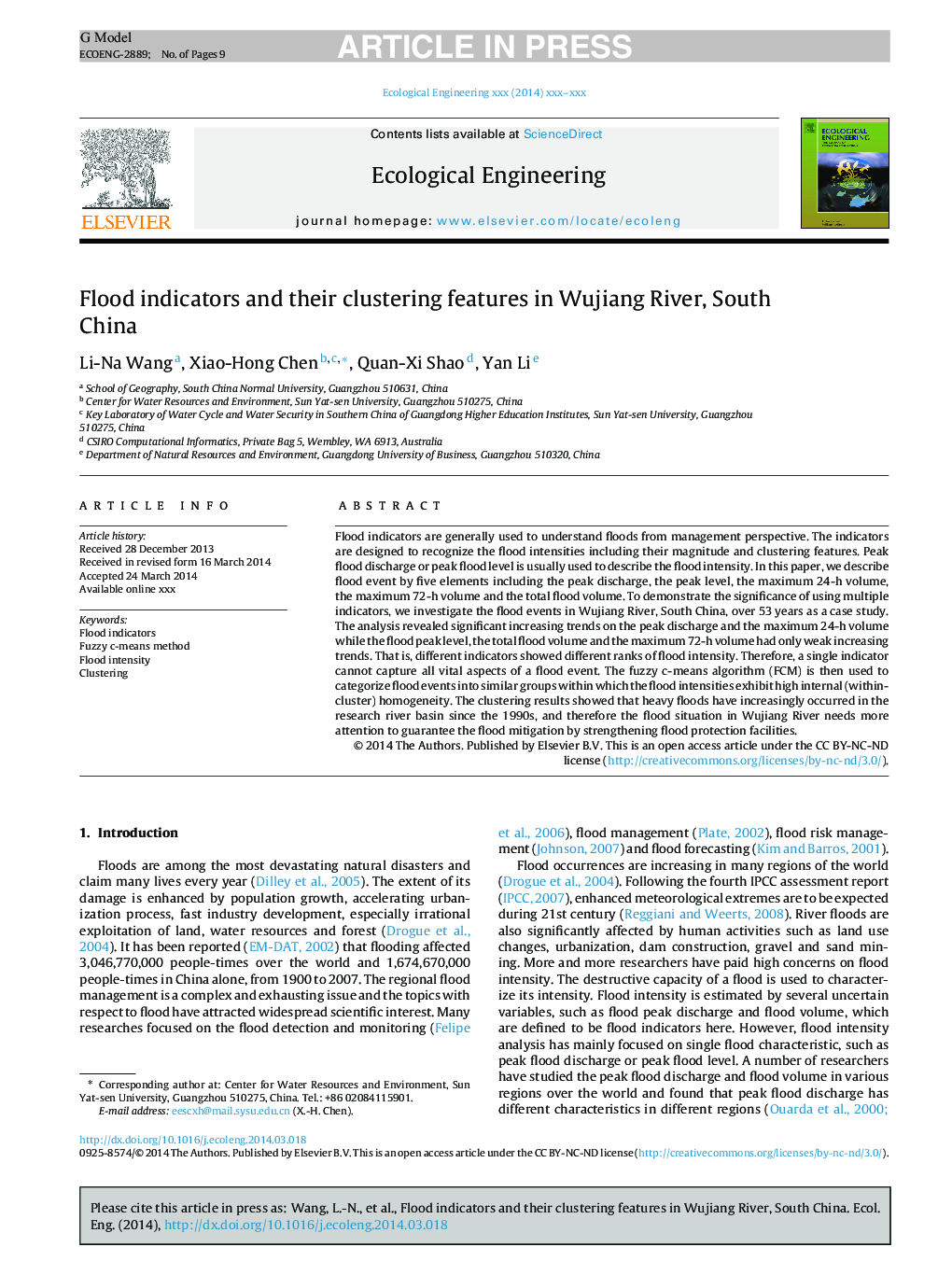| Article ID | Journal | Published Year | Pages | File Type |
|---|---|---|---|---|
| 6301812 | Ecological Engineering | 2015 | 9 Pages |
Abstract
Flood indicators are generally used to understand floods from management perspective. The indicators are designed to recognize the flood intensities including their magnitude and clustering features. Peak flood discharge or peak flood level is usually used to describe the flood intensity. In this paper, we describe flood event by five elements including the peak discharge, the peak level, the maximum 24-h volume, the maximum 72-h volume and the total flood volume. To demonstrate the significance of using multiple indicators, we investigate the flood events in Wujiang River, South China, over 53 years as a case study. The analysis revealed significant increasing trends on the peak discharge and the maximum 24-h volume while the flood peak level, the total flood volume and the maximum 72-h volume had only weak increasing trends. That is, different indicators showed different ranks of flood intensity. Therefore, a single indicator cannot capture all vital aspects of a flood event. The fuzzy c-means algorithm (FCM) is then used to categorize flood events into similar groups within which the flood intensities exhibit high internal (within-cluster) homogeneity. The clustering results showed that heavy floods have increasingly occurred in the research river basin since the 1990s, and therefore the flood situation in Wujiang River needs more attention to guarantee the flood mitigation by strengthening flood protection facilities.
Keywords
Related Topics
Life Sciences
Agricultural and Biological Sciences
Ecology, Evolution, Behavior and Systematics
Authors
Li-Na Wang, Xiao-Hong Chen, Quan-Xi Shao, Yan Li,
